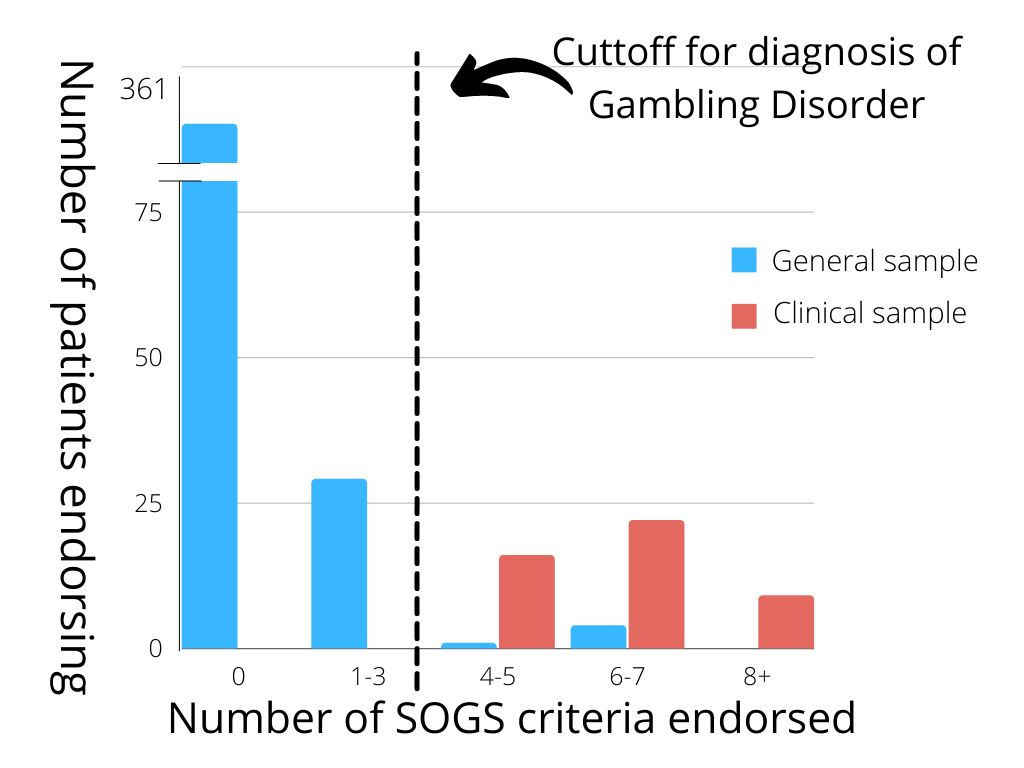Older individuals are at higher risk for Gambling Disorder than the general population. Many factors, such as changes in their finances after retirement or changes in their neurological state due to aging, can lead older adults to gamble more frequently, perhaps beyond their limits. For these reasons, it is important to have evidence that current Gambling Disorder screens are appropriate and valid for this population. This week, The WAGER examines a study by Roser Granero and colleagues that sought to validate the use of the South Oaks Gambling Screen (SOGS) in adults over age 50.
What was the research question?
Is the SOGS a reliable and valid tool to use to screen for Gambling Disorder in populations 50 and older?
What did the researchers do?
The researchers administered the SOGS to 47 people receiving gambling treatment, and compared this to a general population sample of 361 people from the same geographic area. All participants were over the age of 50. Because the study took place in Spain, the researchers used the Spanish language version of the SOGS, which has been validated. The researchers used several steps to test the measure’s reliability and validity. Here, we describe the results of Chi-square analysis they used to compare responses across the two samples to confirm or reject the validity of the SOGS for this population.
What did they find?
The SOGS had what is called “known-groups validity.” In other words, by looking at the SOGS scores, an observer could fairly well distinguish the treatment-seeking participants from the general population participants. Specifically, of the 361 people in the general population group, 327 endorsed zero criteria, 29 scored as having some problematic gambling (1-3 criteria), and 5 met the SOGS’ diagnostic criteria for Gambling Disorder (4 or more criteria). On the other hand, among those receiving treatment for gambling problems, all participants met the SOGS’ criteria for Gambling Disorder by endorsing at least 4 criteria (see Figure).
Based on additional analyses, the authors concluded that the best cut-off score for Gambling Disorder was a 4, and the best cut-off for problem gambling (which includes less severe problems) was a 2.

Figure. The number of respondents who endorsed enough criteria to be classified as having 1) no gambling concerns, 2) problem gambling, 3) low Gambling Disorder, 4) moderate Gambling Disorder, and 5) severe Gambling Disorder. The clinical sample was composed of people with diagnosed Gambling Disorder, in treatment. The general sample contained 361 total participants, and the clinical sample contained 47 total participants. Click image to enlarge.
Why do these findings matter?
These findings validate the use of the SOGS in adults over 50 based on a Spanish population sample. This means that anyone screening for gambling, from clinicians to nursing home staff, can have greater confidence when using the SOGS with this population. Older people tend to gamble more frequently than the general public and are at greater risk of comorbidities, so it is particularly important to have a tested and validated screen to identify Gambling Disorder in this population.
Every study has limitations. What are the limitations of this study?
This study obtained data through a self report survey questionnaire. While any population might be biased in reporting on their own behaviors, this is especially true of older adults, who may have memory or cognitive difficulties that make it harder for them to self report accurately.
For more information:
Do you think you or someone you know has a gambling problem? Visit the National Council on Problem Gambling for screening tools and resources. For additional resources, including gambling and self-help tools, please visit The BASIS Addiction Resources page.
— Jennifer Scarborough, MS
What do you think? Please use the comment link below to provide feedback on this article.




